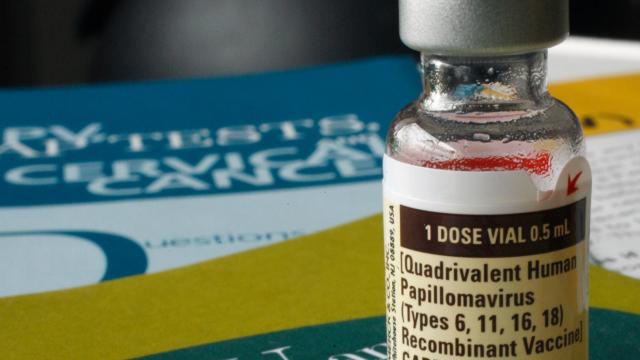A preventable cancer might be virtually eradicated in the U.S. within the next two decades, according to a new study out Monday. It estimates that cervical cancer could be eliminated by as early as 2038, given current rates of vaccination and pap smear screening. Making sure that 90 per cent of women receive screening on schedule, however, could cut that timeline down by a decade.
Most cases of cervical cancer are caused by certain strains of the human papillomavirus (HPV). In recent years, scientists have developed vaccines that can prevent infection from most of these strains. There’s already evidence that HPV vaccination is starting to dramatically lower the risk of cervical and other cancers linked to the virus.
[referenced url=” thumb=” title=” excerpt=”]
But although vaccination remains a crucial aspect of preventing future cervical cancer, it’s screenings that provide the most immediate benefits to women. Indeed, cervical cancer was once one of the leading causes of cancer deaths among women in the U.S., but it has become less deadly over the past 40 years as the rate of routine screening has risen, according to the American Cancer Society. U.S. health officials recommend that women between the ages of 21 and 65 get a pap smear every three years.
The new study is a sequel to a series of papers published last week in the Lancet. That research, which included the input of experts assembled by the World Health Organisation, tried to map out what it would take to eliminate cervical cancer in low- to middle-income countries. This current paper, published in the Lancet Public Health, focuses specifically on the U.S.
The study models out various scenarios of how the rates of screening and vaccination will affect the rate of cervical cancer in U.S. in the years to come.
Currently, according to the authors, 86 per cent of U.S. women get screened for cervical cancer at least once in their lives. Around 50 per cent of teenagers are up to date on their HPV shots (depending on age, a full course is either two or three doses). The study authors estimate that, for teen girls today, 75 per cent will be fully vaccinated by age 26, and for teen boys, 62 per cent will be vaccinated by age 21.
In a country where cervical cancer is effectively eradicated, the WHO has said, four or fewer women out of every 100,000 would develop cervical cancer annually. In the U.S., that would still represent a marked improvement from the 13,800 new cases currently expected in 2020.
According to the authors, assuming vaccination and screening rates stay level, the U.S. could reach the WHO’s baseline sometime between 2038 to 2046. In scenarios where as many as 90 per cent of younger people get vaccinated for HPV or where more people between the ages of 26 to 45 are vaccinated, that needle doesn’t move much. But in a world where 90 per cent of women are screened every three years, we could eliminate cervical cancer a full 10 to 13 years earlier and prevent anywhere from 1,400 to 2,088 new cases annually, the study finds.
“Together with the WHO elimination initiative, we hope this analysis will galvanize public health efforts to improve access to both primary and secondary cervical cancer prevention in the U.S.,” said study senior author Jane Kim, professor of health decision science at Harvard University’s T.H. Chan School of Public Health, in a statement released by the university.
While accomplishing these goals is easier said than done, the authors hope this new study will motivate the U.S. to do more to encourage women to regularly go in for pap smears. Other research has shown that women’s lack of access to health care in general as well as fears (including that the exam will hurt) or misconceptions about the procedure are common reasons why women don’t get screened regularly.
